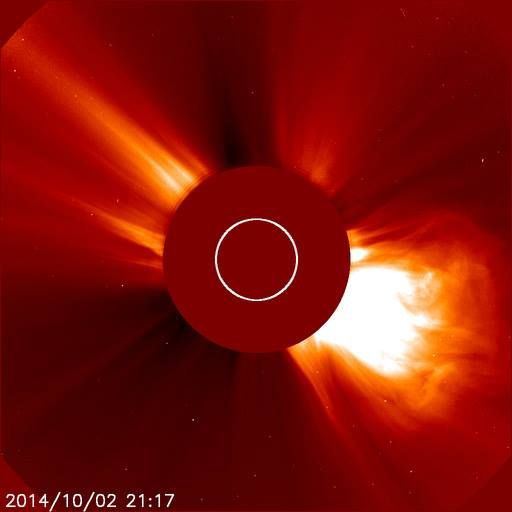Solar Storm Weather Center Opens In UK

Weather on Earth might be filled with hurricanes, tornadoes and snow storms. But what about in space?
The U.K. government announced Wednesday that it has opened a solar storm center to deal with the large explosions in the sun’s atmosphere. These storms, also known as solar flares, can disrupt radio communications, satellites and power grids, the BBC reports.
The Met Office Space Weather Operations Centre, based in Essex, will be a collaborative effort among U.K. and U.S. experts who can predict these solar storms. According to the U.K.’s National Risk Register, solar storms are one of the country’s most serious threats along with the flu and volcanic eruptions in Iceland. The threat is primarily an economic one. A 2012 study by insurance company Lloyds of London said a solar storm, which could leave consumers without network connectivity for a period between 16 days and two years, could result in economic losses of up to $2.6 trillion.
"Things like satellite navigation and power grids represent critical nodes in the world economy, and if they are taken out even for a short time, the impacts can be immense," Lloyds' Nick Beecroft told the BBC.
Tracking space weather isn’t anything new. In the U.S., NOAA's Space Weather Prediction Center in Boulder, Colorado, opened in 1965. More than 40,000 utility companies, government agencies, the satellite industry, commercial aviation and GPS users use the updated forecasts the center provides. Since solar storms typically take at least half a day to reach Earth, scientists can give some forewarning before a flare hits.
“[W]e can give all the folks that we gave a heads-up to a day or two earlier, we can say OK, it’s worse than we expected, it’s as expected, or maybe it’s a bit of a dud and is not going to be the impact we thought it might have here on Earth,” William Murtagh, program coordination at the Space Weather Prediction Center, told Voice of America.
© Copyright IBTimes 2025. All rights reserved.






















